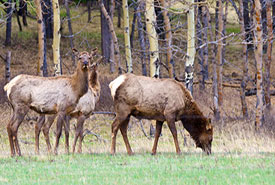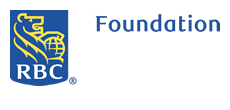Prescribed Fire As A Tool For Grasslands And The Species That Call Them Home

Elk, AB (photo by NCC)
More than 80 per cent of Canada's Prairie grasslands have been lost, and what remain are at risk of disappearing forever. Over thousands of years, grasslands have adapted to be able to manage a wide range of natural landscape disturbances, such as floods, droughts, herds of bison and fires. Grassland species rely on these disturbances, and in many cases will decline or even disappear without them. For ecosystems like grasslands, fire is a powerful tool in nature’s regeneration process, as it clears away old growth to make space for new life to flourish.
To the untrained eye, the visual effects of prescribed fire and wildfire can be quite similar in appearance, especially from a distance. Both can generate significant smoke, flames and visible alterations to the landscape.
Julie Sveinson Pelc, Nature Conservancy of Canada’s (NCC’s) prescribed fire program lead and incident commander, has over 20 years’ experience in wildland fire management. She emphasizes the difference between prescribed fire and wildfires.
“Prescribed fire is an intentionally set fire in a pre-determined location under strictly controlled conditions for the purpose of restoring native habitat,” says Julie. “Wildfire is not planned or controlled, often with unpredicted results, and can have a devastating impact to human life.”
European settlers arrived and spent the next century focusing on fire prevention, and as a result, the number of years between fires increased on most landscapes. A lack of fire on the land has led to the gradual loss of grassland habitat, as trees and shrubs have encroached on historical grasslands.
For species that need healthy and diverse Prairies, such as pollinators, sharp-tailed grouse and elk, prescribed fire can create the open, biodiverse spaces they need to thrive.
Kale Cohen, an assistant conservation biologist with NCC, also serves on NCC’s prescribed fire team, describes how his understanding of land stewardship has been shaped by his experiences with fire.
“Just like any tool, fire has the potential to create serious damage or great benefits,” says Kale. “I enjoy the challenge and responsibility of ensuring we create the greatest good with its use.”
As the effects of climate change progress, wildfires are predicted to become more intense, more often. These extreme events can harm people directly, including our health, homes and communities.
Prescribed fires never take place under extreme fire danger conditions, when vegetation ignites easily and spreads quickly, making the fire difficult to control. Prescribed burns use controlled fire to manage and restore the natural processes of a specific land area. These fires are carefully contained, under precise environmental conditions.
Before the fire is even ignited, a great deal of planning must take place. This process begins with the creation of a burn plan, which details the where, why and how of the prescribed fire. The plan includes a prescription, which identifies the weather conditions, including temperature, relative humidity, wind direction and speed, and fuel moisture content of vegetation and organic materials. The prescription also details the number of people, training and equipment resources needed to conduct the burn, as well as community and neighbour communications and a contingency plan in the unlikely event that the fire spreads.
When the fire has run its course, the burned area is carefully monitored to ensure containment until it can be declared extinguished. This includes putting out any active fire or hot spots and smouldering areas that are exhibiting smoke for as long as necessary to ensure containment.
When a prescribed fire is deemed unacceptable, other tools can be used in place of fire on the land, such as grazing or mowing to improve grassland health. These alternative methods may be used to achieve some of the benefits that prescribed fire would have brought.
Different microclimates, moisture and variation in the vegetation within a section of land determine how the fire will behave. For example, fire may skip over the shadow of a tree where the soil is moist and cool. These variations create a mosaic of habitats, which lead to a diversity of species.
The year 2023 was the best in recent history for NCC’s prescribed fire team in Manitoba. With a focus on restoring grasslands efficiently and at a landscape-scale, investments were made to increase fire crew capacity, which enabled us to burn over 280 hectares in the tall grass prairie natural area. That success continues this year across southern Manitoba.
During the spring of 2024, prescribed fire was applied to another 285 hectares. With a further 260 hectares planned for this fall, this year is projected to be within the top five years for the number of hectares burned in NCC’s 30-year prescribed fire history in Manitoba.
Prescribed fire allows us to continue to restore resilient landscapes, which are important for nature and people in addressing the dual crises of climate change and biodiversity loss.
The Fish and Wildlife Enhancement Fund (FWEF), along with the Manitoba government, provided funding for this project. The Manitoba Habitat Conservancy (MHC) administers the FWEF program on behalf of the Manitoba government. See https://mbhabitat.ca/fwef/ for more information about FWEF.
With financial support from the Weston Family Prairie Grassland Initiative.
With support from TD Bank Group.
 |
 |
 |
 |















